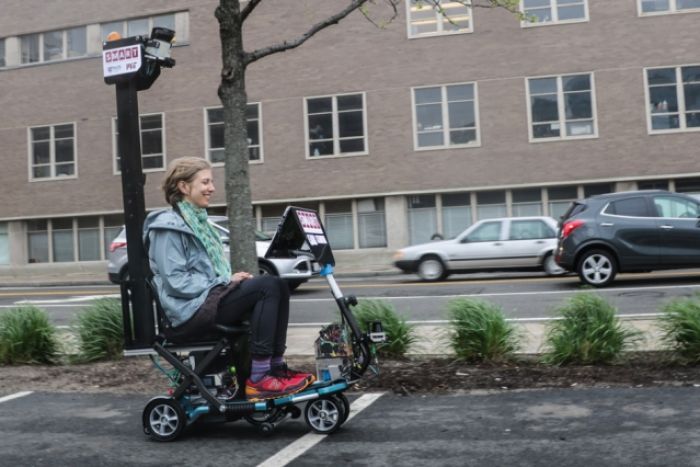New project of MIT
The researchers had previously used the same sensor configuration and software in trials of autonomous cars and golf carts, so the new trial completes the demonstration of a comprehensive autonomous mobility system. A mobility-impaired user could, in principle, use a scooter to get down the hall and through the lobby of an apartment building, take a golf cart across the building’s parking lot, and pick up an autonomous car on the public roads.
The new trial establishes that the researchers’ control algorithms work indoors as well as out. “We were testing them in tighter spaces,” says Scott Pendleton, a graduate student in mechanical engineering at the National University of Singapore (NUS) and a research fellow at SMART. “One of the spaces that we tested in was the Infinite Corridor of MIT, which is a very difficult localization problem, being a long corridor without very many distinctive features. You can lose your place along the corridor. But our algorithms proved to work very well in this new environment.”
Uniformity
Using the same control algorithms for all types of vehicles — scooters, golf carts, and city cars — has several advantages. One is that it becomes much more practical to perform reliable analyses of the system’s overall performance.
“If you have a uniform system where all the algorithms are the same, the complexity is much lower than if you have a heterogeneous system where each vehicle does something different,” says Daniela Rus, the Andrew and Erna Viterbi Professor of Electrical Engineering and Computer Science at MIT and one of the project’s leaders. “That’s useful for verifying that this multilayer complexity is correct.”
Furthermore, with software uniformity, information that one vehicle acquires can easily be transferred to another. Before the scooter was shipped to MIT, for instance, it was tested in Singapore, where it used maps that had been created by the autonomous golf cart.
Similarly, says Marcelo Ang, an associate professor of mechanical engineering at NUS who co-leads the project with Rus, in ongoing work the researchers are equipping their vehicles with machine-learning systems, so that interactions with the environment will improve the performance of their navigation and control algorithms. “Once you have a better driver, you can easily transplant that to another vehicle,” says Ang. “That’s the same across different platforms.”
Finally, software uniformity means that the scheduling algorithm has more flexibility in its allocation of system resources. If an autonomous golf cart isn’t available to take a user across a public park, a scooter could fill in; if a city car isn’t available for a short trip on back roads, a golf cart might be.
Before riding the scooter, users were asked how safe they considered autonomous vehicles to be, on a scale from one to five; after their rides, they were asked the same question again. Experience with the scooter brought the average safety score up, from 3.5 to 4.6.

09 November 2016
Driverless-vehicle for scooters
by

